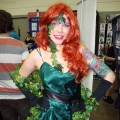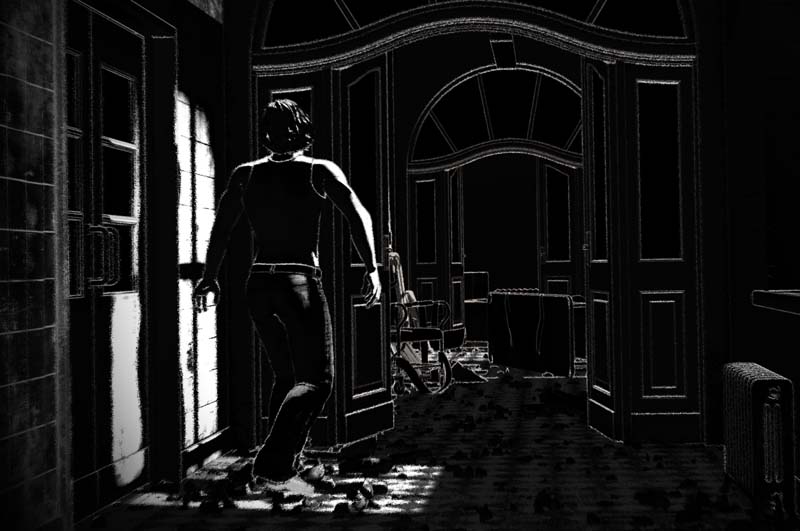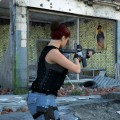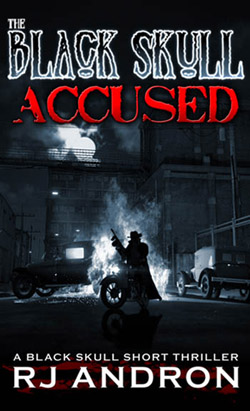You would think it would actually be easy to find advice on writing a good superhero story given just how many comic books and superhero movies have actually been created, but the reality is far different.
We have seen a big transformation in the superhero genre in recent years as big-name writers have started putting their own stamp on the superheroes that we’ve all grown up with. Sometimes, this results in some more interesting stories or interpretations, but often it just results in something less than spectacular. Fortunately, now we have the Internet. This lets us share thoughts on what makes a good superhero story.
Here’s a list of seven guidelines that I would consider key. Your mileage, as always, may vary.
1. Forget about the Hero’s Journey
The hero’s journey is one of those holdovers from literature that has caused more damage to the superhero genre than any other trope I could imagine. Literature, just like any other genre, has its own rules. Unfortunately for many writers, they are taught to believe that literary rules apply across the board. And, if those rules are ignored, then it’s not good fiction.
The hero’s journey is a concept that tries to apply mythology to contemporary storytelling. It is a story where the protagonist is transformed by going out into the wilderness and gaining the skills and powers he needs to be able to deal with the villain. We see the hero’s journey concept in stories like Star Wars, where Luke Skywalker goes from being a farm boy, to becoming a hero of the rebellion by undergoing all of these trials and tribulations along the way. It’s not a bad formula. It can generate some good stories. However, too many teachers of creative writing and literature preach that it requires an internal transformation on the part of the protagonist, and that if this internal transformation doesn’t happen, then the story is considered episodic, and therefore bad.
Let’s get rid of that notion right now.
The hero’s journey works well for an origin story, where a person learns to put on the superhero outfit and prepare himself for battling super villains. But in later stories, there is no need for the internal transformation.
Instead, take the idea of the hero’s journey at its most basic level. The hero starts in trouble, and then through his own efforts, gets out of trouble. That’s it. That’s the entire hero’s journey that’s needed for superheroes.
I would argue that if you try to do more than this, you’re actually going to end up undermining your story.
2. Make the Superhero Story Vicarious
Let’s face it, superheroes are escapist literature. Nothing wrong with that, despite what the creative writing professors would have you believe. People do in fact read for entertainment.
One way they are entertained is by getting thrills doing things that they’re normally not able to do. Whether this is swinging between skyscrapers on a slender spider’s web, flying into the heart of the sun, or simply giving the bad guys a good thumping, the superhero genre gives readers a chance to experience all of that and so much more. If you introduce people to something that they’ve never done before, or which they would desperately love to do, then your superhero story is going to resonate with them.
One of the big appeals of the classic pulp stories in the 1930s was that these fictional characters were able to fight against gangsters and organized crime in ways that the public normally could not. And it is out of that tradition in the 1930s that we end up having the modern superheroes. Likewise, in the 1970s, when street crime was on the rise, the Death Wish series of films started and played to massive audiences as people saw the lead character take the law into his own hands to deal with the rampant lawlessness that people thought was overrunning the streets.
Call it wish fulfillment. Call it whatever you want, but if you can make the reader feel the same joy that Spiderman feels when he’s swinging between buildings over Manhattan, or if you can make the reader get a sense of satisfaction when Batman takes down a gang of thugs, or if you can fire the audience’s imagination by making them wonder what it’s like to be Superman and fly, then you found that vicarious element that can make your story appealing.
3. Make Superheroes Relatable
Peter Parker is a teenager. Bruce Wayne is a man dealing with the loss of his parents. Clark Kent is an immigrant, and a small-town boy dealing with the big city. Wonder Woman dreams of the world beyond Paradise Island. All of these heroes have endured in no small part because readers see something reflected of themselves in those characters. Superheroes are our eyes and ears into their world. They let us do the things that we wish we could do. In order to do that, we have to be able to meet them on some level.
No matter how alien or how bizarre the superhero is, we as readers should still be able to connect with the hero. We have to be able to find something in that hero’s story that makes the story about us.
I’d even go farther than that. I’d say that having your readers connect with the superhero is a good thing, but having the readers connect with the superhero’s thematic conflict is even better. So, what do I mean by thematic conflict?
Every character, superhero or not, has dreams, hopes, and aspirations. There are things that stand in the way of that character accomplishing his dreams, hopes and aspirations. The tension that exists between what the character wants, and what stands in his way, is thematic conflict. Now, we’re not talking about the character at a single-story level. Instead, what we’re talking about goes right to the heart of the character.
Let’s take a look at Superman as an example. Originally created by Jerry Siegel and Joe Shuster in the 1930s, Superman is all about the immigrant experience. Superman wants to fit in to the world around him and be accepted, but because of who he is and his powers, he is never quite able to fit in. There are those who would treat him as a threat, and there are those that would elevate him to the level of a God. Instead, all he wants to be is human. He is the Last Son of Krypton and yet he wants to belong in the human society around him. This desire to belong, to have friends, to be a part of the world around you resonates with a great many readers. Everyone from immigrants, to children trying to figure out how they fit into the world beyond their family, to adults trying to fit in at the workplace, they can all understand that thematic conflict between what Superman wants and what is standing in his way. Now, not every Superman story needs to be about him trying to fit in, but that thematic conflict is part of his character. And that conflict is what will allow people to relate to a godlike alien visitor from a dead, far-off planet.
Find the thematic conflict of your character. Identify what that character streams hopes and aspirations are. Figure out what stands in the way of those dreams. Cast it in a way that your readers can understand and apply to their own lives.
4. Make the Hero Someone You Root and Cheer for
The rise of antiheroes in the 1960s in cinema took a little bit longer to come into the comic book world. Now, this may have had to do with the Comics Code Authority which mandated certain treatments of heroes and comic book content, or it may just have been a reflection of the changing comic book marketplace with the rise of the dedicated comic book shops and the move away from convenience stores, bookstores, and supermarkets. Antiheroes really didn’t become a part of the comic book world until the 1980s.
And since then, they’ve never left.
An antihero is someone who does heroic things, but doesn’t display any heroic characteristics. In fact, antiheroes would be just as comfortable in the super villain role, as they would in the superhero role. There are a lot of antiheroes in the comic book universe. You could argue that characters like John Constantine, Wolverine, Deadpool, Punisher, Cable, and many others all fit the role of antihero. Even more mainstream characters, such as Batman, Superman, and Wonder Woman, have all started taking on anti-heroic qualities. Batman, for example, has long since been turning into a paranoid curmudgeon who has contingency plans for any of his allies turning rogue. The cosmic Boy Scout Superman, in the Injustice: Gods Among Us comic series, kills the Joker and starts to realign his morals to a more evil bent based upon the guidance of Wonder Woman of all people.
Regardless of whether the character is hero or antihero, it is still important for the readers to like, root for, and cheer for the hero as they go through the story. If your story reaches the point where the readers just don’t care what happens to the hero, then you’ve lost the reader. A perfect case in point is the recent Battlestar Galactica remake series where the storytelling had the humans so unappealing that I actually started rooting for the Cylons to wipe them out. Was it good storytelling? Was dramatic? I don’t care; I stopped watching. None of the characters were likable to me, so I didn’t bother continuing to tune in.
So, why are we talking about antiheroes when discussing characters that we root for and cheer for? Antiheroes are an ongoing trend in comic books. Some have lauded this as a more realistic approach to storytelling, but I have my doubts. I think that it’s a lot easier to be cynical with the characters that you create nowadays, than it is to actually have them stand for higher ideals. Nevertheless, if you can take an anti-hero, and make him someone that the audience wants to see succeed, then you’re going to have a good superhero story.
Let’s take the example of the Wolverine. Wolverine is, to put it politely, a person with anger management issues. The thing is, when he loses his temper, metal claws come out from his hands and he uses those to shred his opponents to bits. He smokes cigars, drinks beer, and has no patience for authority of any kind. You would think that this would make him automatically a villain. However, the Wolverine has certain traits that make the audience fall in love with him. First, he has an uncompromising sense of right and wrong. Even though you would expect otherwise, he actually acts as the moral center for the X-Men, or Alpha Flight, or whichever team he’s associated with. Second, he has an association with the exotic, more specifically bushido. The Japanese way of the samurai acts as a counterbalance to his beast-like rage. Third, we have multiple cases of unrequited love where the women he loves are unable to return the affection. Combined, all of these characteristics give Logan a sense of nobility that is very much at odds with the public persona he displays. And it is that nobility that makes us want to cheer for him as he undergoes his battles. Plus, the “take no bullshit” attitude doesn’t hurt.
5. Make the Superhero a Reflection of Their World
They say that Superman is Metropolis, and Batman is Gotham. Both of these heroes fit perfectly into their cities. You can’t switch these characters around and have the stories remain entertaining. The cognitive dissonance readers would feel from having the cosmic Boy Scout of Superman dealing with the machinations of Gotham’s super villains would only be surpassed by that of Batman trying to blend into the shiny glass and steel structures of Metropolis. The superheroes you create should match the world that they operate in.
Characters like Spiderman, Moon Knight, the Punisher, and Daredevil all fit their setting which is the darker side of New York City. The Avengers on the other hand all fit into the bright and gleaming world of Manhattan.
When you are creating a superhero, consider just how that character chose to put on the mask and fight crime in his world. For the X-Men, for example, the battles are predominately mutant on mutant, or mutant on government. Very rarely do ordinary criminals get involved in their battles. For the X-Men, their decision to become superheroes is a matter of banding together for self-protection. Compare that with Spiderman, who puts on the mask because he feels he has the responsibility to do something with his powers. A character like Spiderman would be completely out of place in the X-Men’s world, and vice versa.
6. Never Subvert the Superhero’s Moral Code
Every character has a moral code. It may not necessarily be a good moral code but it is still there. It’s that moral code that helps define the character to the readers, and done right, can give the readers the opportunity to root for that character.
Although it’s considered trendy nowadays in comic book writing to try to subvert that moral code by showing all of the flaws in that code, I would be really careful about trying to do a “heel turn” and show that the code has no value whatsoever.
Let’s take as an example the conflict between the Joker and Batman. There have been several stories being told that question the Batman’s decision to keep on imprisoning the Joker rather than just out and out killing him. I mean, let’s face it, the Batman puts the Joker away in Arkham, and a few issues later the Joker escapes and goes on yet another killing spree. I don’t know what the Joker’s body count is, but I would expect it would be in the hundreds at the very least. In fact, I’m surprised that the citizens of Gotham don’t just riot and take the law into their own hands as far as the Joker is concerned. Each time the Batman captures the Joker, only to let him escape again, the argument goes that the Batman is in part responsible for the Joker’s body count.
Given this constant subversion of Batman’s moral code by the writers, it chips away at the Batman’s likability. We go from seeing Batman as a hero, to being ineffective at best, and an accessory to mass murder at worst. Not exactly the type of thing that would make people root for the Batman.
Let’s look at another example. One of the best quotes from Superman comes from the Justice league Unlimited cartoon and it really shows off the moral code the Superman chooses to live by:
I feel like I live in a world made of cardboard. Always taking constant care not to break something. To break someone. Never allowing myself to lose control, even for a moment, or someone could die.
If Superman chooses to kill or lose control, that for ever ends his possibility of being part of human society. If you make Superman kill, then you also end up killing his dreams. He goes from being hero to villain in no time at all.
And it’s also at that point, that the readers can no longer root for him.
7. Make the Superhero the Solution to His Own Problem
Back in the bad old days of the 1970s and 1980s, television writers would sometimes write themselves into a corner and so they would have to come up with solutions in a real hurry. If they were writing superhero stories, the solution was to give the superhero a brand-new power. If they were writing science fiction, then the solution was to come up with some technobabble that somehow allowed the heroes of the story to wave their hands and make the problem go away. The problems surrounding the “power of the week” ended up making an awful lot of those shows unwatchable both in the original viewings, and even years down the road.
For the hard-core fans, the ones who took note of all of the technical aspects of the starship, talking car, or superheroes’ powers, the power of the week solution ended up robbing an awful lot of the tension in storytelling. Even though in episodic storytelling the readers know that the superhero is going to emerge victorious in the end, a lot of the tension comes from wondering just how they’re going to win at the end of the day. It becomes almost like a detective novel where part of the fun is figuring out whodunit before the detective. The readers will know the heroes’ capabilities, and the rules the heroes operate under. If there is something new that’s introduced that they were unaware of at the start of the story, then the readers feel cheated. And justly so.
The noted pulp author Lester Dent, creator of Doc Savage, had a formula for dealing with this type of issue. At the story’s climax, where the hero is almost buried under his troubles, the hero extricates himself using his own wits, skills, or brawn. No power of the week, no handwavium, no cheating.
More tips?
Well, that’s seven tips to start with for writing good superhero stories. There are many, many more. Let me know what you think in the comments below.








